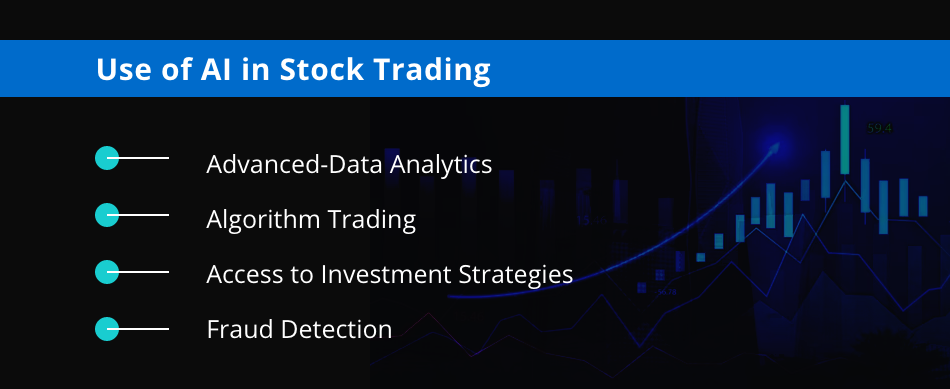20 Great Reasons For Deciding On AI Stock Analysis Sites
20 Great Reasons For Deciding On AI Stock Analysis Sites
Blog Article
Top 10 Tips On Assessing The Integration And Compatibility Of Ai Analysis Of Stocks And Predicting Trading Platforms
Integrity and compatibility are key factors to consider when evaluating AI analysis and forecasting platforms for trading. Platforms that integrate seamlessly with the existing workflows, tools and systems will increase efficiency and effectiveness. Below are the top ten suggestions to assess compatibility and integration.
1. Check Brokerage Integration
Brokers that are supported: Make sure the platform integrates with the brokerage you prefer account, or trading account.
Trade execution: Determine whether the platform allows direct trade execution through the broker integrated.
Account synchronization. Check if the platform allows you to connect your account balances in real-time as well for transactions and positions.
2. Examine API Availability
API access: Verify whether the platform provides an API available to developers who want to automate workflows or develop custom tools.
API documentation: Check if the API is well-documented, with clear examples and use cases.
Rate limits: Determine if the API has reasonable rates limits that can handle the volume of usage you expect.
3. Integrating Third-Party Tools
Popular Tools: Ensure that that the platform integrates with other software, like Google Sheets and Excel.
Data export/import - Ensure that the platform can support simple data export or import to/from other tools.
Plugins/extensions : Verify that the platform allows for plugins or extensions. They can add additional functionality.
4. Test Compatibility with Operating Systems
Desktop compatibility - Make sure that the system you select is compatible with Windows, macOS and Linux.
Mobile compatibility - Check to see if a platform has a mobile application that is compatible with iOS and Android.
Access via the internet (for additional flexibility): Verify that the platform is accessible using a webbrowser.
5. Examine Data Integration Capabilities
Data sources. Make sure the platform supports several data integrations (e.g. data providers for market, social media sentiment news feeds, etc.).
Real-time feeds for data: Find out if the platform permits for real-time data integration to give the most current analysis.
Import historical data - Check whether your platform allows you to integrate historical data into your backtesting software or analytical software.
6. Testing of cloud and on-premise compatibility
Cloud-based platforms: the platform is accessible from any location with internet access.
On-premises deployment: Find out if your platform supports deployment on premises.
Check the hybrid model. It combines on-premise and cloud capabilities.
7. Check for Cross Platform Synchronization
Device synchronization. The platform needs to sync data and settings on every device including mobile, desktop and tablet.
Real-time updates: Check if the changes made to one device are reflected instantly on other devices.
Access offline: Check whether your platform provides limited functionality and data access while offline.
8. Evaluation of compatibility with trading strategies
Algorithmic trading: Check that the platform supports algorithmic or automated trading strategies.
Custom indicators. Find out if the platform allows you to use scripts or technical indicators.
Strategy backtesting: Determine whether the platform allows backtesting trading strategies with historical data.
9. Assess Security and Compliance
Data encryption: Ensure that the platform is using encryption for data at stationary and while in transit.
Authentication : Make sure that the platform is compatible with secure authentication methods (e.g. two-factor verification).
Regulatory Compliance: Check if your platform complies with relevant regulations.
10. Scalability of Tests, Performance, and Efficiency
Scalability: Ensure that the platform is able to handle an increase in data and users and users, so that it can adapt to the needs of your business.
Performance during load: Determine whether the platform responds under high-volatility conditions.
Resource usage: Make sure the platform makes efficient use of system resources such as CPU, memory and bandwidth.
Bonus Tips
User feedback: Use testimonials from users to assess the platform integration capabilities.
Trial period: Test the platform for free, or download a demo to test how it works with your existing software and workflow.
Customer Support: The platform must provide solid support when it comes to integration problems.
You can evaluate the integration, compatibility, and efficacy of AI stock trading platforms by following these guidelines. Take a look at the best he has a good point about ai for stock predictions for site examples including best AI stock trading bot free, ai for investing, ai investing app, ai for investing, AI stock market, best ai trading app, stock ai, investing ai, AI stock picker, trading ai and more.
Top 10 Tips For Assessing The Risk Management Of AI stock Predicting/Analyzing Trading Platforms
Any AI stock-predicting/analyzing trading platforms must have risk management in place, which is essential for protecting your investment and minimizing losses. A platform with robust tools for managing risk can help navigate volatile markets and allow users to make better decisions. Below are the top 10 tips for assessing risk management capability of these platforms.
1. Review Stop-Loss and take-profit features
Configurable settings: Ensure that you set your limit of take-profit or stop-loss for a specific trade.
Check whether the platform allows for trails stops. They will automatically adjust themselves as markets shift in your direction.
If the platform has stop-loss order guarantees that your trade is closed at the specified price in markets that are volatile, you can be confident that you will be able to trade successfully.
2. Assessment Position Sizing Instruments
Fixed amount - Ensure that you are able to define the size of your positions relative to a certain amount.
Percentage portfolios: Discover whether the risk can be managed proportionally by setting your portfolios as a percent of your portfolio's total.
Risk-reward-ratio: Verify whether the platform allows users to set individual risk/reward ratios.
3. Look for assistance with diversification
Multi-asset Trading: To diversify your portfolio of investments, be sure that the platform you choose can handle trading in a variety of asset classes.
Sector allocation: Verify whether the platform provides tools for monitoring and managing sector exposure.
Diversification of geographic risk: Check if the platform permits trading on international markets in order to spread geographical risk.
4. Examine the Margin and Leverage Controls
Margin requirements: Ensure the platform is clear about margin requirements when trading leveraged.
Examine the platform to determine whether it permits you to set limits on leverage to limit the risk.
Margin Calls: Ensure that the platform has sent timely notifications of margin calls in order to avoid account liquidation.
5. Examine Risk Analytics and Reporting
Risk metrics: Make sure whether your platform contains key risk metrics including Sharpe ratio, as well as Drawdown to help you manage your portfolio.
Scenario analysis: Verify that the platform is able to create different scenarios for the market to assess the risk.
Performance reports: Check whether the platform has comprehensive performance reports, which include risk-adjusted return.
6. Check for Real-Time Risk Monitoring
Portfolio monitoring: Ensure your platform provides live monitoring of the risk exposure to your portfolio.
Notifications and alerts. Find out if the platform offers real-time notification of risk-related events.
Risk dashboards: Ensure that your platform offers an adjustable risk dashboard that gives you an entire picture of your personal profile.
7. Assess the effects of stress testing and backtesting
Stress testing: Check that the platform will allow you to stress-test your portfolios or strategies in extremely difficult market conditions.
Backtesting. Check whether the platform supports backtesting, which involves the use of data from the past to determine the risk and the performance.
Monte Carlo simulations: Verify that the platform is using Monte Carlo simulations to model possible outcomes and evaluate risk.
8. Risk Management Regulations Compliance Assessment
Regulation compliance: Ensure that the platform complies with relevant risk management regulations (e.g., MiFID II in Europe, Reg T in the U.S.).
Best execution: Check if the platform adheres the best execution practice, which ensures transactions are executed at the most competitive price in order to minimize any slippage.
Transparency: Verify that the platform has clear and transparent disclosures about the risks.
9. Verify that the risk parameters are controlled by the user.
Custom Risk Rules: Ensure that you have the ability to create custom rules for managing risk (e.g. the maximum amount of daily loss, or a maximum size of tradable position).
Automated risk controls Check to see whether your system can enforce risk management rules based on the parameters you've defined.
Manual overrides: Check if the platform allows manual overrides to automate risk controls in the event of emergencies.
Study Case Studies, User Feedback Review Case Studies, User Feedback Case Studies
User reviews: Read feedback from users to assess the platform's effectiveness at managing risk.
Case studies and testimonials They will showcase the risk management capabilities of the platform.
Forums for community members Find out if there's a vibrant community of traders who share tips and strategies for managing risk.
Bonus Tips
Trial period: Take advantage of a free demo or trial to test the platform’s risk management capabilities in realistic scenarios.
Customer Support: Ensure that the platform is able to provide a comprehensive customer support solution in the event of any risk management-related questions or issues.
Educational resources: See whether the platform offers educational resources or tutorials on risk management best practices.
These tips will help you assess the risk management abilities of AI analysis and stock prediction platforms. In this way, you'll be able to select a platform that protects your capital and limits potential losses. Effective risk management tools are vital to navigate the volatile markets and achieving long-term trading success. See the top rated ai software stocks for website info including stocks ai, best AI stocks, chart ai trading, AI stock predictions, stock predictor, stock trading ai, best ai for stock trading, trading ai tool, best ai trading platform, how to use ai for copyright trading and more.